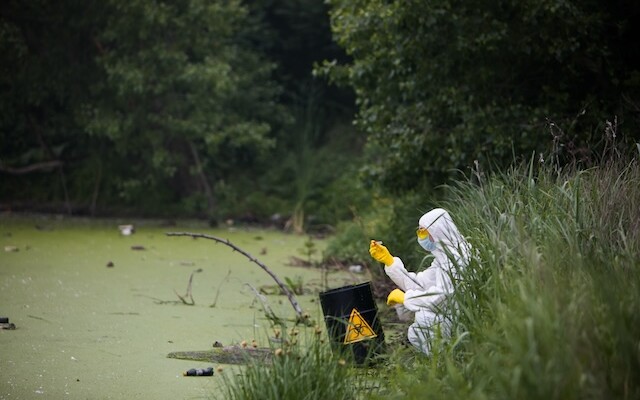Maritime industry workers deal with a wide range of hazardous materials. Aboard a chemical tanker carrying sulfuric acid, the special precautions needed to clean a spill might be evident simply from the name of the cargo. In shipyards, employees regularly deal with countless nasty compounds, from degreasing solvents to paint strippers.
When such substances need to be disposed of, they sometimes become something we call a “hazardous waste.” But what exactly does that term mean? We might correctly guess that a hazardous waste is something we don’t want to be around in a confined space with poor ventilation. However, we’ll see that such wastes have certain qualities that can be legally defined.
If we go by the guidelines of the Environmental Protection Agency (EPA), a hazardous waste must first be a solid. While that may suggest something like a bar of aluminum, “solid” here could include liquids and compounds with gaseous components. Next, the waste must not be “excluded” (for example, having an exemption due to being part of certain industries — mining, agriculture, and others).
At this point, we can designate the waste as “hazardous” either because it appears on certain lists, or it possesses certain characteristics. Examples of listed wastes can include toluene, benzene, xylene, acetone, etc. In terms of the second category (based on certain characteristics), we look at toxicity, reactivity, ignitibility, or corrosivity, and a few other traits.
Naturally, this is a somewhat shorthand definition. The actual regs that govern hazardous wastes are voluminous and can be complex. Furthermore, hazardous substances and wastes are addressed by many entities, including IMO, the Coast Guard, OSHA, and others.
For the most part, hazardous wastes and substances will quietly go along their journey in a cargo hold or drum, ultimately ending up in a chemical plant or environmental disposal facility. It’s only if something goes wrong that people could panic and pull-out cargo manifests and material safety data sheets under the light of a flashlight to figure out what that funny smelling green puddle forming at the bottom of a dripping container might be.
And being prepared for such a situation could be valuable from the standpoint of crew safety, as well as complying with environmental laws for clean-up and disposal.




